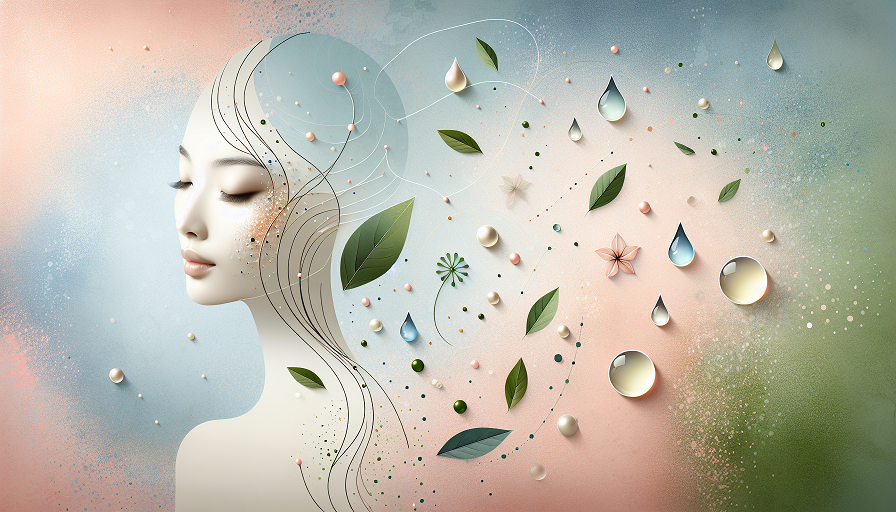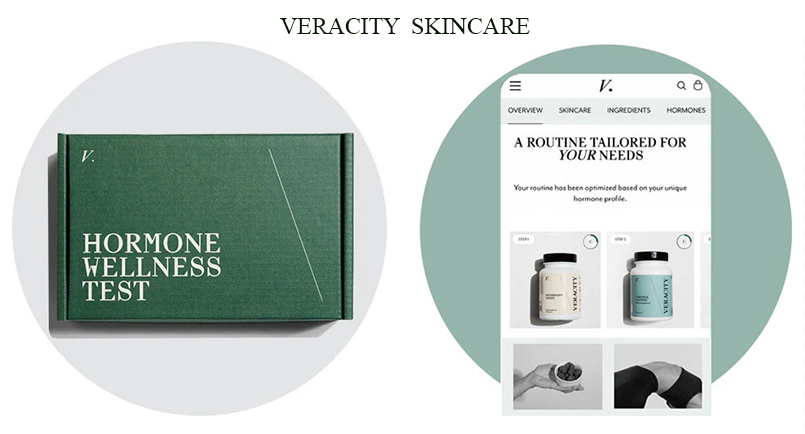
Hormones are the silent conductors behind many of our body’s functions, and when they’re in balance, they work wonders. But what happens when one hormone overpowers the others? Estrogen dominance is a common condition in women, and it can impact not only overall health but also your skin.
Contents
- What Is Estrogen Dominance?
- Common Causes of Estrogen Dominance
- Signs and Symptoms of Estrogen Dominance
- How Estrogen Dominance Impacts Skin Health
- Managing Estrogen Dominance Naturally
- Skin-Care Ingredients That Help Manage Estrogen-Dominance-Related Skin Concerns
- When to Seek Professional Help
- Embracing Hormone Balance for Healthier Skin
What Is Estrogen Dominance?
Estrogen dominance occurs when estrogen levels are high relative to other hormones, especially progesterone. It doesn’t necessarily mean that estrogen is sky-high; it could simply mean that estrogen levels are outpacing progesterone. This imbalance can happen for several reasons, ranging from lifestyle factors to underlying health conditions.
Understanding the Role of Estrogen and Progesterone
Estrogen and progesterone work together to regulate reproductive health, but they also impact things like mood, weight, and skin health. Estrogen promotes cell turnover, collagen production, and hydration, which are all good things for skin. However, when there’s too much estrogen and not enough progesterone to balance it out, the results can be less than ideal for both body and skin.
Common Causes of Estrogen Dominance
Estrogen dominance can stem from multiple factors. Here are some of the common causes:
- Environmental Estrogens: Chemicals found in plastics, pesticides, and even some cosmetics can mimic estrogen, adding to the body’s estrogen load.
- Hormonal Birth Control: Birth control pills often contain synthetic estrogens that can disrupt natural hormone balance.
- Diet and Lifestyle: Diets high in processed foods and low in fiber can contribute to estrogen buildup. Lack of exercise and high-stress levels can also play a role.
- Liver Function: The liver is responsible for processing and clearing out excess estrogen. If it’s not functioning optimally, estrogen can build up.
While these factors contribute to estrogen dominance, the exact cause can vary from person to person.
Signs and Symptoms of Estrogen Dominance
Wondering if you might be dealing with estrogen dominance? Here are some common signs and symptoms associated with this hormonal imbalance.
Physical Symptoms
- Weight Gain: Particularly around the hips and thighs, which can be a clue your body is holding onto extra estrogen.
- Fatigue: If you’re feeling tired all the time, it might be due to hormonal imbalance rather than just lifestyle factors.
- Breast Tenderness: High estrogen can lead to swollen or tender breasts, especially around menstruation.
- Irregular Periods: Estrogen dominance can interfere with your menstrual cycle, making it irregular or heavier than usual.
Emotional Symptoms
- Mood Swings: Too much estrogen can contribute to emotional rollercoasters, making you feel irritable or anxious.
- Low Libido: High estrogen levels can lower sex drive, especially when out of sync with progesterone.
If any of these symptoms resonate, it may be worth discussing estrogen dominance with a healthcare provider, as testing and diagnosis can offer clarity and treatment options.
How Estrogen Dominance Impacts Skin Health
Estrogen plays a big role in keeping skin hydrated, firm, and youthful. However, too much of a good thing can have the opposite effect, leading to a variety of skin issues. Here’s how estrogen dominance may show up on your skin.
Increased Oil Production and Acne
When estrogen levels are high, it can lead to an overproduction of sebum (oil), which is a common precursor to acne. This type of hormonal acne often appears along the jawline, chin, and cheeks, and it may be more cystic in nature.
If you notice increased breakouts around your cycle, it could be due to estrogen fluctuations, especially if there’s an imbalance with progesterone.
Hyperpigmentation and Melasma
Estrogen dominance is closely linked with hyperpigmentation, especially melasma. Known as the “mask of pregnancy,” melasma appears as dark patches on the face and is triggered by estrogen’s effect on melanin production. Sun exposure can worsen these patches, so diligent sunscreen use is key.
Sensitivity and Redness
High estrogen levels can make the skin more sensitive to irritants, leading to redness, inflammation, and a general “reactive” quality. If your skin suddenly feels easily irritated or prone to redness, it could be due to hormonal fluctuations.
Managing Estrogen Dominance Naturally
If you suspect estrogen dominance, there are several lifestyle changes and natural approaches that can help balance your hormones and improve your skin health.
Eat a Fiber-Rich Diet
Fiber helps to remove excess estrogen from the body. Foods like fruits, vegetables, whole grains, and legumes are not only great for digestion but also support estrogen balance. Aim for 25-35 grams of fiber daily to help reduce estrogen dominance.
Avoid Environmental Estrogens
Limiting exposure to xenoestrogens—chemical compounds that mimic estrogen—can help. Choose organic foods when possible, avoid heating food in plastic containers, and use natural personal care products free from parabens and phthalates.
Support Liver Health
The liver is responsible for processing excess estrogen. Supporting liver function can help clear out extra hormones. Consider incorporating liver-friendly foods like cruciferous vegetables (broccoli, cauliflower, Brussels sprouts), green tea, and lemon water.
Balance Stress Levels
High-stress levels can exacerbate estrogen dominance. Activities like yoga, meditation, and regular exercise can reduce stress, helping to keep hormone levels balanced and skin healthier overall.
Skin-Care Ingredients That Help Manage Estrogen-Dominance-Related Skin Concerns
In addition to lifestyle adjustments, certain skincare ingredients can target skin issues related to estrogen dominance.
- Salicylic Acid: Helps with acne and oil control, making it a great choice for estrogen-induced breakouts.
- Vitamin C: Reduces hyperpigmentation and evens out skin tone, helping with melasma and dark spots.
- Niacinamide: This powerhouse ingredient reduces inflammation, oil production, and strengthens the skin barrier, making it perfect for sensitive, breakout-prone skin.
- Sunscreen: Hyperpigmentation from estrogen dominance can worsen with sun exposure. Daily sunscreen use is crucial for managing dark spots.
Look for gentle, effective products that target your specific skin concerns without causing further irritation.
When to Seek Professional Help
If lifestyle changes and skincare products aren’t making a difference, it may be time to consult a healthcare provider or dermatologist. They can offer testing for hormone levels to confirm estrogen dominance and suggest treatment options. Common treatments might include:
- Hormone Therapy: Hormone therapy can help balance estrogen and progesterone levels but should be discussed thoroughly with a healthcare provider.
- Prescription Skincare: Dermatologists may offer treatments like retinoids or other prescription options to address skin concerns directly.
Finding the right balance of hormones and a routine that supports your skin may take time, but addressing estrogen dominance can make a big difference in skin health and overall wellness.
Embracing Hormone Balance for Healthier Skin
Estrogen dominance can affect both your skin and your sense of well-being. By understanding what’s going on beneath the surface, you can take practical steps to restore hormonal balance and improve your skin. With the right care, it’s possible to manage estrogen dominance and embrace healthier, more radiant skin that makes you feel confident.

